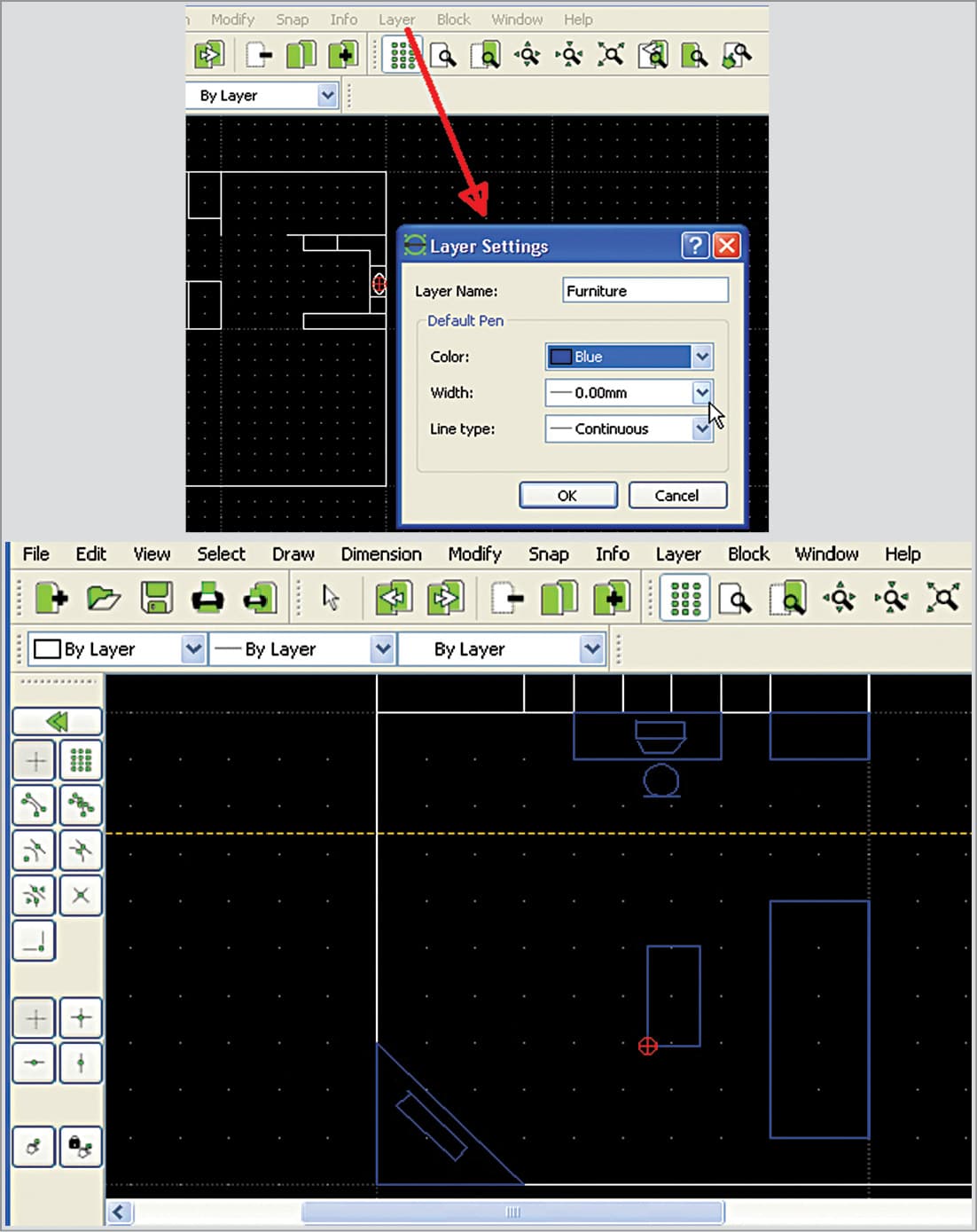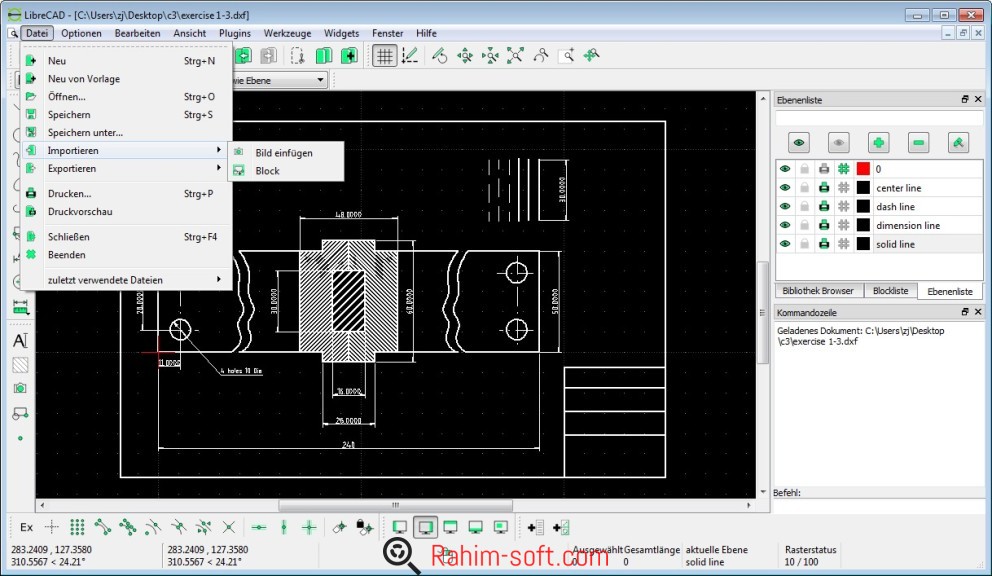
- #Librecad edit text software#
- #Librecad edit text free#
- #Librecad edit text mac#
- #Librecad edit text windows#
For instance the picuture underneath was way to dark and I had to modify it to be able to engrave it into plexiglass. Photoshop offers users the ability to create, enhance, or otherwise edit images, artwork, and illustrations.
#Librecad edit text windows#
Adobe PhotoshopĪdobe Photoshop is a raster graphics editor for use on Windows or MaOS. Since the traces were way to thin I had to increase the stoke. To do this I had to select Image Trace -> Black and White Logo, which converts the object itselft into paths. For instance below I wanted cut out a beer mug with the vinyl cutter.

I often use it to create a design for the vinyl cutter. It is used to create a variety of digital and printed images.
#Librecad edit text software#
Adobe IllustratorĪdobe Illustrator is a software application for creating drawings, illustrations, and artwork using a Windows or MacOS computer. Here you can also set the size and the font.Īlthough LibreCAD and Rhino are very similar, I personally like the Rhino interface better. To write something or engrave something select the text tool. Next just select the lines you want to assign to the outside layer. To create a layer you have to go to the layer tab. Then join the lines again and be certain that evry line is closed. To be on the safe side explode the lines by selecting everything and typing in explode or select the explode tool in the toolbar. When you import a file into Rhino, always make sure you have only closed lines. Unfortunately Rhino doesn't support parametric design. The design underneath shows a box I designed to hold an engraved picture in plexiglass. We often use Rhino in the FabLab to generate the GCODE for the laser cutter or CNC machine because you can create different types of layers. It also has a toolbar on the left and a command line on the top such as LibreCAD. Rhinoceros is a commercial 3D computer graphics and computer-aided design application software or Windows, Apple and Linux. It was a nice experience to try a different kind of software, but it would have been easier for me to develop it in Fusion 360. I used LibreCAD to design a photo puzzle using the spline and line tool. For this reason it is a lot easier if you work with the command line. This means every time you want to attach another line to an already drawed line you have zoom in to check where the line ends. Moreover LibraCAD doesn't show the end of a drawed line. Therefore I started to use the command line, so I wouldn't have to move around the drawing area to select the spots. I mostly lost track of my design and had to zoom in and zoom out to find it.
#Librecad edit text mac#
The first time I worked with LibreCAD I didn't like it, because it was really hard to move around with the mac mouse. On the right side of the drawing area you have the command line. In the top you can find the Menu and on left side there is the tool bar. LibreCad has an interactive user interface.
#Librecad edit text free#
LibreCAD is a free Open Source CAD (free computer-aided design) application for Windows, Apple and Linux.

Moreover the goal was to model a possible final project. It also exports Icons (ico and icns), and the usual other Image formats… The Layers and Blocks seem to work well, too.For this week's assignment we had to evaluate different kind of computer-adided design software. I have spent enough time with LibreCad to say, it’s simple and perfect for making graphics for use in Kicad (versus FreeCad and Inkscape). Note: I did Not tweak the Offsets for best font-image clarity in the fill panel but, that’s a minor detail to dial-in for the Label’s Text size.

Image below shows the Text used for each Cu pour label and results (after moving the text from behind the Cu Fill/Pour). Note: LibreCad does have an “Explode Text To Letters” feature but, I haven’t yet mastered it’s use for Cu Labels in Kicad… Thus, TBD. The LibreCad Text DXF’s were handled differently by Kicad, thus, results are not similar. The first three were very usable for Text in a Cu Fill/Pour. LibreCad exported Text as a unified/filled item (no outlines)



 0 kommentar(er)
0 kommentar(er)
